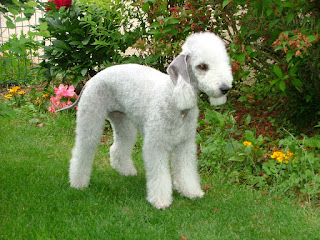Introduction:
The place of origin of Belgian Sheepdog is Belgium. They are herding breed of dog. The Belgian Sheepdog is used for herding trials. The life span of the breed is 10-12 years. It is also called as Belgian Sheepdog, Chien de Berger Belge.

Origin / History:
The Belgian Sheepdog is an intelligent, protective and gentle dog. They are independent, alert and active dog. They respond quickly to the slightest sound of disapproval in the owner’s voice. If they are properly socialized then they will be very well-adjusted and well-balanced dog. They love to have attention from everyone. They are very protective, so care should be taken when you introduce any strangers or new people. Training should be given perform well with other dogs and pets.
Physical Appearance:
The height of the Male Belgian Sheepdog is 24-26 inches (61-66 cm) and the weight is 65-75 pounds (29-34 kg). The height of the Female Belgian Sheepdog is 22-24 inches (56-61 cm) and the weight is 60-70 pounds (27-32 kg). The Belgian Sheepdog is very athletic, strong and muscular dog. They have wise set, dark brown eyes. The nose is dark. The ears are erect and completely triangular in shape. The legs are straight and well formed. The tail is long and curls slightly upwards. The color of the breed is black.
Health Concerns:
The Belgian Sheepdog is naturally a healthy and hardy breed. But some are prone to minor health concerns like epilepsy, skin allergies, eye problems, excessive shyness, excessive aggressiveness and occasionally seen hip dysplasia and elbow dysplasia. They become obese and lazy so do not overfeed them.
Grooming:
Frequent brushing is required to remove the dead hair. They need to be exercised mentally and physically.
Cost:
The cost of purchasing this breed is $ 850 USD
Advantages:
The place of origin of Belgian Sheepdog is Belgium. They are herding breed of dog. The Belgian Sheepdog is used for herding trials. The life span of the breed is 10-12 years. It is also called as Belgian Sheepdog, Chien de Berger Belge.

Origin / History:
- Nicholas Rose developed the breed in the late 1800s from a pair of all black shepherds
- The Belgian Sheepdog was bred for herding and protection by Mr. Rose
- They have also been used as a military dog, police dog, search and rescue dog
The Belgian Sheepdog is an intelligent, protective and gentle dog. They are independent, alert and active dog. They respond quickly to the slightest sound of disapproval in the owner’s voice. If they are properly socialized then they will be very well-adjusted and well-balanced dog. They love to have attention from everyone. They are very protective, so care should be taken when you introduce any strangers or new people. Training should be given perform well with other dogs and pets.
Physical Appearance:
The height of the Male Belgian Sheepdog is 24-26 inches (61-66 cm) and the weight is 65-75 pounds (29-34 kg). The height of the Female Belgian Sheepdog is 22-24 inches (56-61 cm) and the weight is 60-70 pounds (27-32 kg). The Belgian Sheepdog is very athletic, strong and muscular dog. They have wise set, dark brown eyes. The nose is dark. The ears are erect and completely triangular in shape. The legs are straight and well formed. The tail is long and curls slightly upwards. The color of the breed is black.
Health Concerns:
The Belgian Sheepdog is naturally a healthy and hardy breed. But some are prone to minor health concerns like epilepsy, skin allergies, eye problems, excessive shyness, excessive aggressiveness and occasionally seen hip dysplasia and elbow dysplasia. They become obese and lazy so do not overfeed them.
Grooming:
Frequent brushing is required to remove the dead hair. They need to be exercised mentally and physically.
Cost:
The cost of purchasing this breed is $ 850 USD
Advantages:
- Good companion dog
- Excellent watchdog
- They get along with small children and family very well
- They become over aggressive if not properly socialized
- Not highly playful dog



